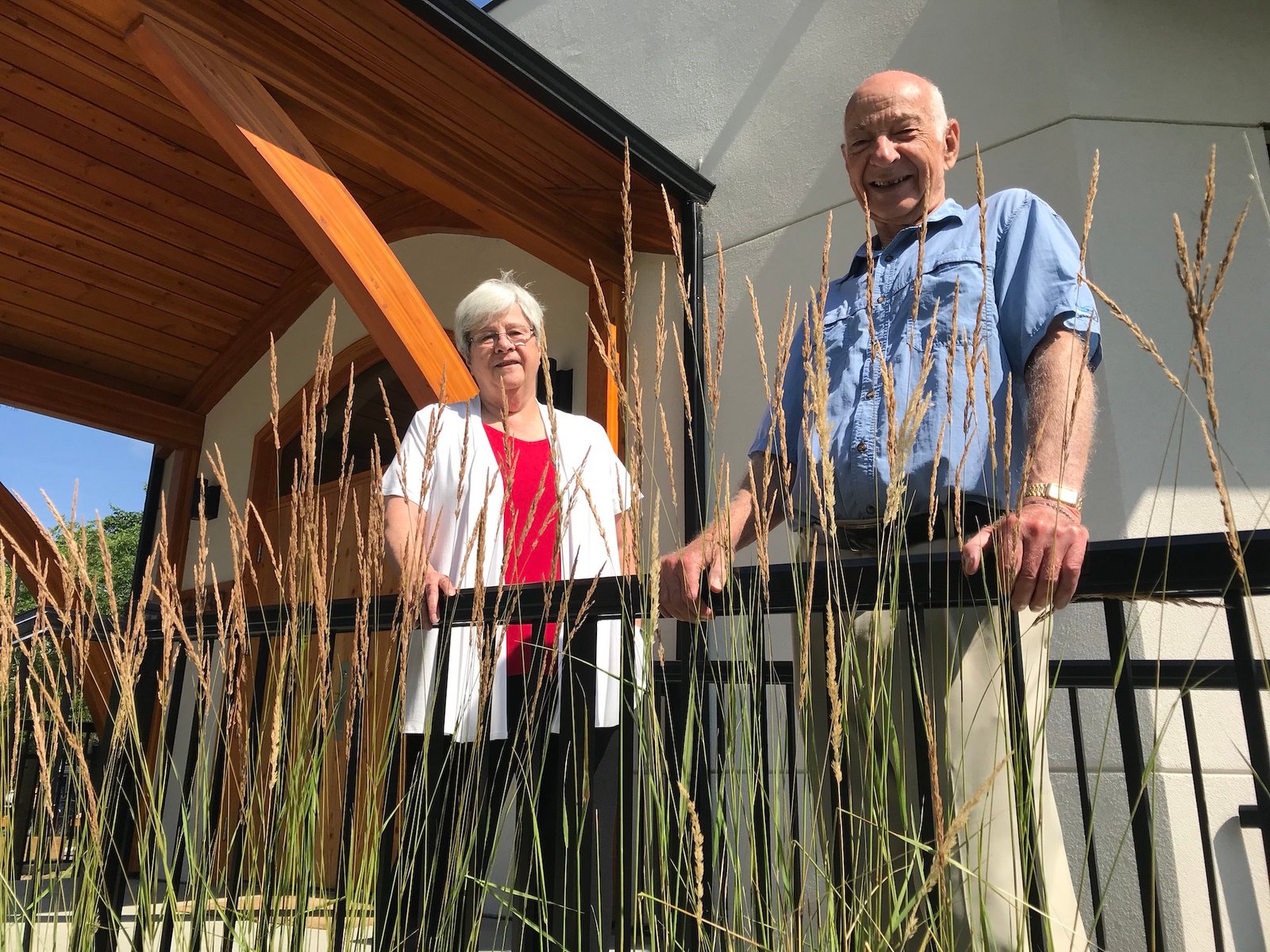A few years back, then-minister of Westmount Presbyterian Church Reverend Annabelle Wallace and her congregation gathered together to decide what to do about their 1950s-era cinder block church. With its poor insulation, seven furnaces, unsustainable heating bills and the ever-increasing list of repairs the first step was to take stock of their core values.
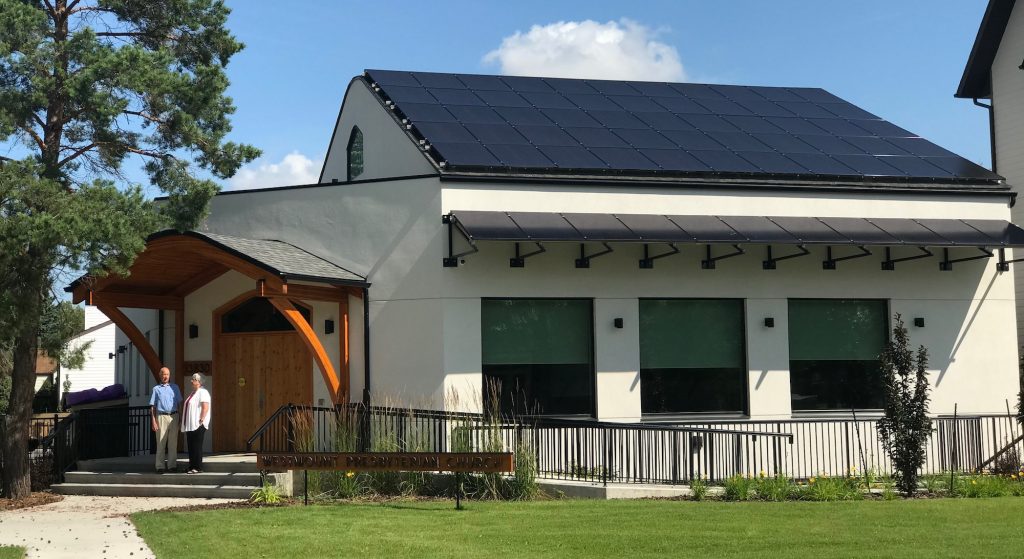
Environmental stewardship was at the forefront of these conversations. “Well, I believe that looking after the environment is our job—that we are here to look after God’s creation,” said Wallace in an interview last month. “Look after the people, look after the animals, look after the grass, look after the trees. Our job is to be stewards of creation.”
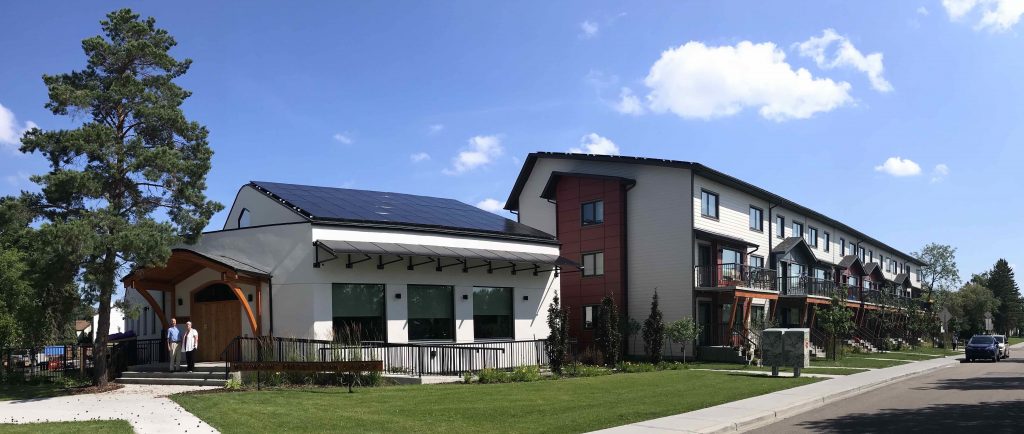
At the same time, they were sponsoring a refugee family and helping them to find desperately needed housing. “Finding rental for a large family is very hard. I would phone and you said five kids and people just hang up on you,” said Wallace.
The congregation couldn’t afford to fix their church, let alone pay the utilities in their big old inefficient church. Reverend Wallace and her congregation embarked on an incredible journey. First, they took stock of their assets. Then they devised a plan to address everything they care about: their church, the environment, homes for refugees and the diversification and revitalization of their community.
Change is Good: Making the Shift to Net-Zero
“I think that is a very high priority for everyone right now to look after our environment where we know that things need to change,” said Wallace. “This project is an example that you can change. And when you change, it’s not frightening… it’s good.”
Cash-poor and land-rich the church cut a deal with the the Right at Home Housing Society. In exchange for a free lease the housing society agreed to build 16 units of housing for refugees and a new church on church land.
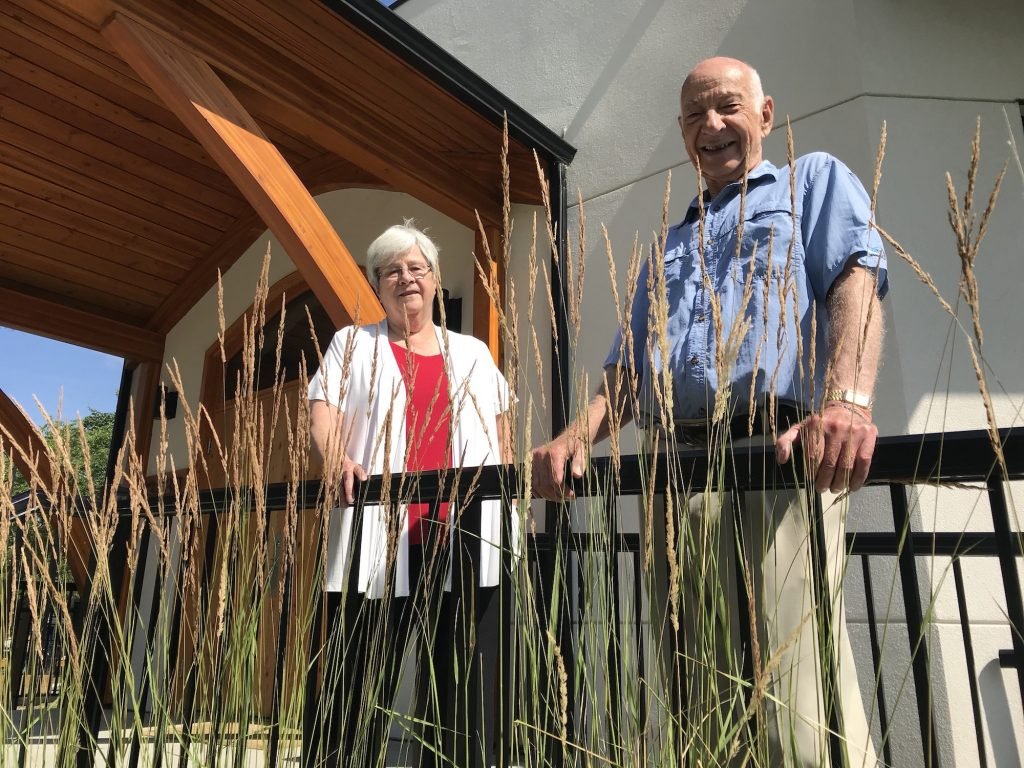
The housing society hired Peter Amerongen of Habitat Studio. He envisioned one of the most efficient and innovative projects ever built. Completed in 2018 it is a powerhouse—quite literally—of net-zero technology. The combined church, daycare, and 16-unit social housing development is powered by a solar array capable of producing all of the building’s electricity and a geothermal heating system efficient enough to forgo a gas line and the 17 separate bills that would have come for each unit and the church.
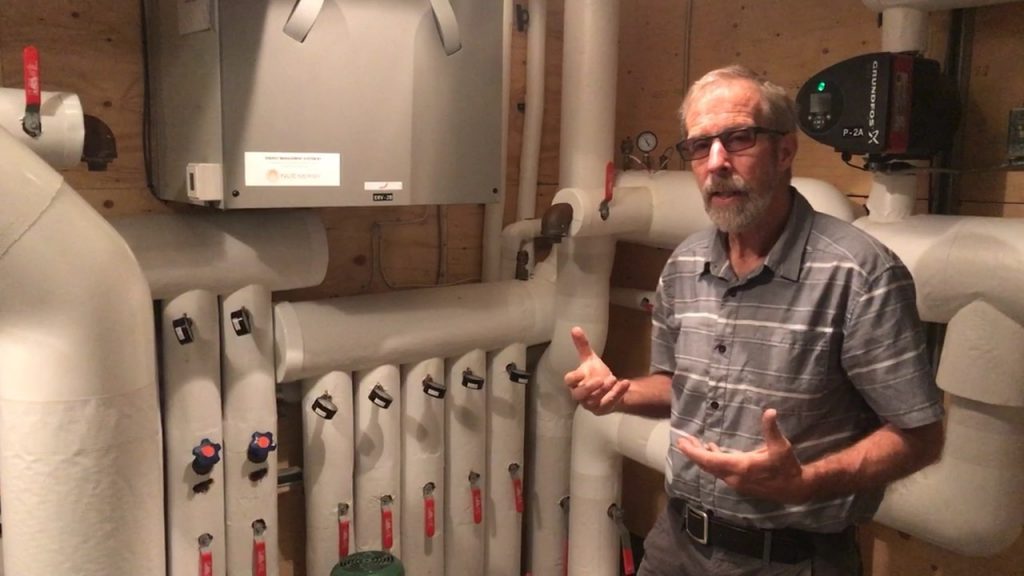
There were doubts in the early days. The congregation would lose the building it had called home for so many years. “There were times of uncertainty I remember saying to the most faithful guy in this whole project, Les Young, ‘Well what if we do this, and then the congregation dies?’ And he was being wise [and] said, ‘It’s a benefit for those in the future,’” said Wallace.
Now, the future is here — and so are the benefits. “It’s just unbelievable,” said Les Young, an Elder of the church. “The combination of the solar energy, the geothermal and the use of heat exchangers is just tremendous. And it’s turned out. I’m sure it’s going to be super economic in the long term.”
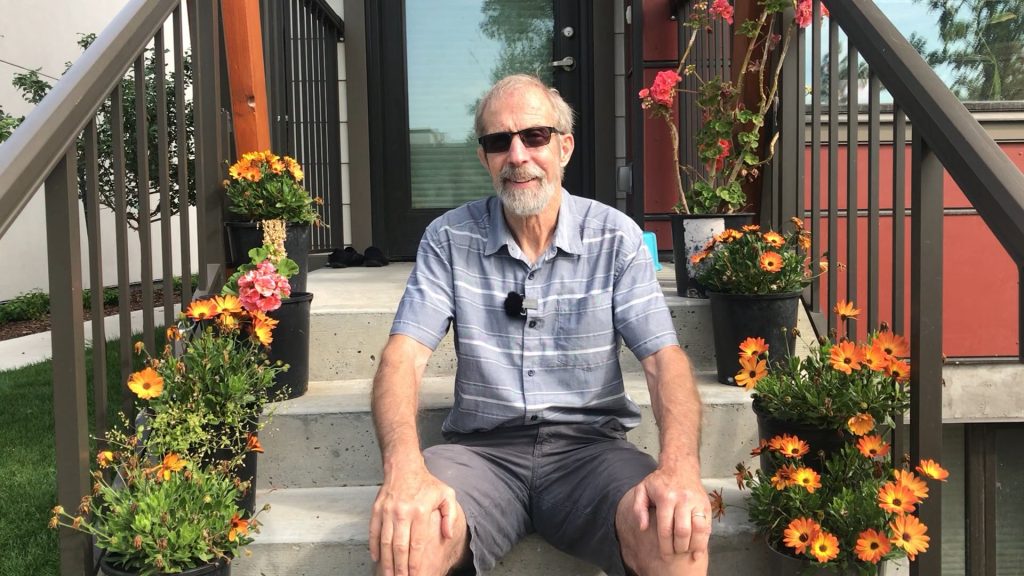
Good for the Environment – Good for the Community
For Peter Amerongen, net-zero and social housing go hand-in-hand. “Right at Home has always gone for energy-efficient buildings because they know they’re going to have to pay the utility costs basically forever,” he said.
“It’s especially important for social housing. They have difficulty finding money… And so if they’ve got a building that’s got a guaranteed almost zero utility and operating cost for basically forever…they’ve got stable and very low operating costs basically forever.”
“These buildings solve three big problems — four if you count climate change,” said Amerongen.
Not only does the new development completely eliminate the Church’s heating issues—their utility bills are now almost nil—it also answered a desperate need for affordable housing for newcomers to Edmonton. By creating space to welcome young families to the neighbourhood, the church and social housing development also just happened to solve an urgent enrolment shortage at the neighbouring Coronation School. “The 35 kids who live here have basically saved the school from closure,” said Amerogen.
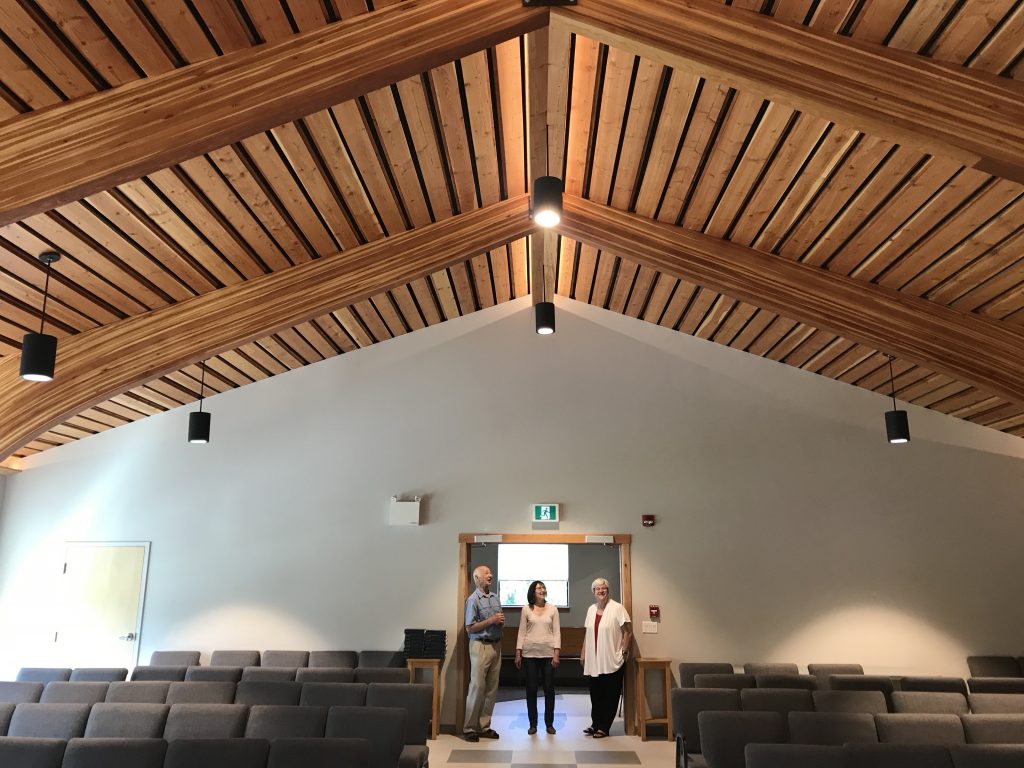
Church’s Wooden Heart Reused
The reuse of materials is a hallmark of sustainable building design. And the timbers in the old church were part of the emotional heritage of the building. Les Young went from thinking it would be unaffordable to save the old timbers to “someone who said we have to save the boards we can never buy that lumber again,” says Young.
“The beams in the old church have come to the new church,” said Reverend Wallace. “These are wonderful wooden beams that when Peter Amerongen walked in, he said, These beams are coming with us. And that was really good for the people that that made them feel better about giving up this building.”
The salvaged wood was used to create a rich wooden ceiling in the new sanctuary and even the new church’s doors were carved out of the heritage wood. This innovative reuse of materials has even created waves beyond the community. “The use of wood attracted a group of Japanese contractors actually to visit the church and the housing development,” said Young.
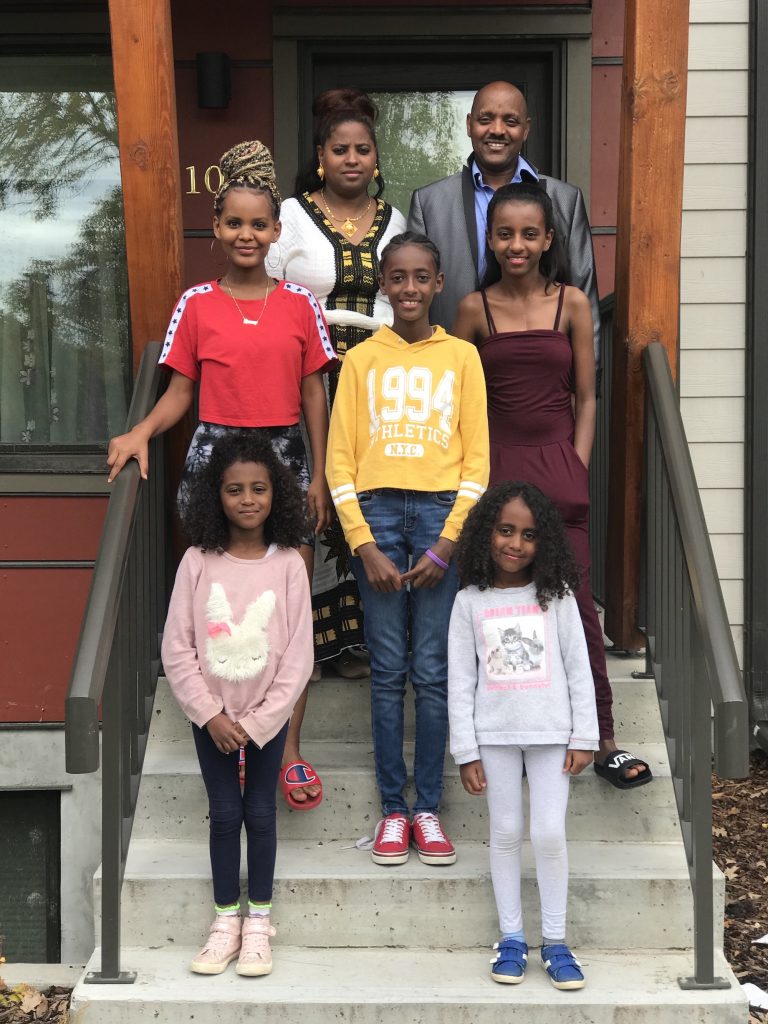
A Refuge for Newcomers
We wanted to meet the people who now live in the housing and we were welcomed into the Teklay home. The Teklays are a large refugee family that fled Eritrea to Sudan. As Dahlak Kahsay Yohannes Tesfayesus set up to roast and brew some Eritrean coffee in their traditional way in their new bright living room, her husband Tesfayesus Teklay, explained how the project has worked for the families that live there.
“I came to Canada because in my home country there is no freedom of speech and freedom to worship or to exercise my belief or religion,” said Teklay, from Eritrea. Because of his religion, Teklay was arrested and imprisoned on his wedding day along with his pastors and 95 members of his Pentecostal church congregation.
When he was released, Teklay and his wife fled to Sudan — but life continued to be difficult. Eventually, they decided they needed to leave, and come to Canada.
While they feel safe in Canada, finding an affordable home for their family of five children was a challenge at first. “We [were] paying like $1,800 including the utilities. And at that time I [didn’t] have a job I [didn’t] have any income. So it was very, very difficult,” Teklay explained.
Now, living in these innovative homes, with almost no utility bills, in a well-established Edmonton neighbourhood, and with a supportive church community around them, the family is flourishing. Within a year, they plan to apply for permanent residency. Teklay and his wife are taking English courses, and soon Teklay plans to build on his experience as a bus driver back home by applying to work as an Edmonton Transit bus driver. Today most of his children go to school across the street, along with 55 other children from the project.
Watching Dahlak Kahsay Yohannes Tesfayesus roast, grind, and brew the beans right before my eyes. I got a sense of the homelife they have been able to create here, and of the waves of sustainability — environmental and social — that continue to emanate from this unique, net-zero project. It’s “peaceful,” said Teklay, “and for children it is safe.”
